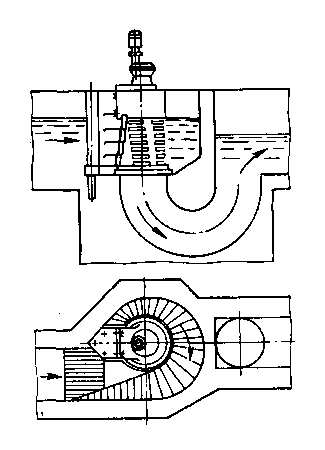Word List:
| 1. superheated steam
| перегретый пар
|
| 2. purity
| чистота
|
| 3. impurety
| примесь, загрязнение
|
| 4. precipitation
| осаждение
|
| 5. steam path components
| составные части по пути прохождения
пара
|
| 6. HP/IP/LP turbine (High/Intermediate/Low pressure turbine)
| ступени высокого/среднего/низкого давления турбины
|
| 7. LP steam chemistry
| химический состав пара низкого
давления
|
| 8. boiler water
| котловая вода
|
| 9. feed water
| питательная вода котла
|
| 10. fossil power plant
| электростация на ископаемом (органическом) топливе
|
| 11. molecular species
| включения на уровне молекул
|
| 12. solubty
| растворимость
|
| 13. volatility
| летучесть, испаряемость
|
| 14. the condensate part
| выпадающая в осадок часть
|
| 15. blade
| лопасть турбины
|
| 16. deposit, deposition to deposit
| отложение, осадок, осаждение;
выпадать в осадок
|
| 17. ingress
| вход, попадание
|
| 18. condenser
| конденсатор
|
| 19. make-up demineralizer
| очиститель добавочной воды от минеральных солей
|
| 20. evaporator
| испаритель
|
| 21. condensate polisher
| очиститель от осаждений
|
| 22. condensate polisher effluent contamination
| загрязнение за счёт вытекающего потока
из очистителя осаждений
|
| 23. underway
| в процессе разработки
|
| 24. to date
| на сегодняшний день
|
| 25. cycle chemistry
| водно-химический цикл
|
| 26. ionic contaminant
| ионная примесь
|
| 27. consistent (with)
| совместимый (с)
|
| 28. tolerable
| приемлемый
|
Steam Chemistry and the Turbine
Superheated steam entering a turbine typically contains low levels of impurities. As the steam expands through a turbine, the subsequent precipitation of impurities onto the surfaces of steam path components leads to a variety of problems in the HP, IP or LP turbine. Thus, the purity of boiler water, feedwater and steam are some of the most important criteria for ensuring the availability and reliability of components in fossil and nuclear power plants.
Of the highest importance for power plant operators is determining the allowable concentrations of molecular species often present in turbine steam, moisture, and deposits.
Further, current operating limits for steam and boiler water are derived from the equilibrium solubilities and volatilities of single compounds while multicomponent mixtures and rapid boiling and steam expansion exits in the steam cycle.
Contaminants such as chlorides, sulfates, organics, and carbon dioxide, enter the condensate part of the cycle, but do their damage in the boiler (tube failures) or in the turbine (blade and disc failures, and deposition). Sources for such impurity ingress into the steam and/or water process cycle include: (i) condenser cooling water in-leakage, or (ii) make-up demineralizer, evaporator or condensate polisher effluent contamination. C3orrosion products are generated in feedwater heaters and condensers and flow into the turbine where they deposit.
Work currently underway shows promise that a fully predictive model will soon be available to calculate steam composition from boiler water composition and to predict moisture composition from LP steam chemistry.
Chemical compounds are soluble in superheated steam, and their solubility sharply decreases as the steam expands.
To date the basis for deriving cycle chemistry guidelines has been: “Limiting the concentration of ionic contaminants throughout the plant cycle to levels consistent with steam impurity levels tolerable in the turbine will adequately protect the boiler and other cycle components”.
Focused Practice
I. Answer the following questions:
1. What does superheated steam entering a turbine typically contain?
2. When do impurities lead to a variety of problems and where?
3. What are some of the most important criteria for ensuring the availability and reliability of components in fossil and nuclear power plants?
4. What are current operating limits for steam and boiler water derived from?
5. Where are corrosion products generated?
6. When does solubility of chemical compounds decrease?
7. What has been the basis for deriving cycle chemistry guidelines?
II. Analyse the grammar structures underlined in the above text.
III. Speak on: The contaminants and the corrosion products.
SECTION III
COMPUTER SIENCE
Unit 28







